Ahmed Badawy
Terahertz Multiple Access: A Deep Reinforcement Learning Controlled Multihop IRS Topology
Mar 16, 2023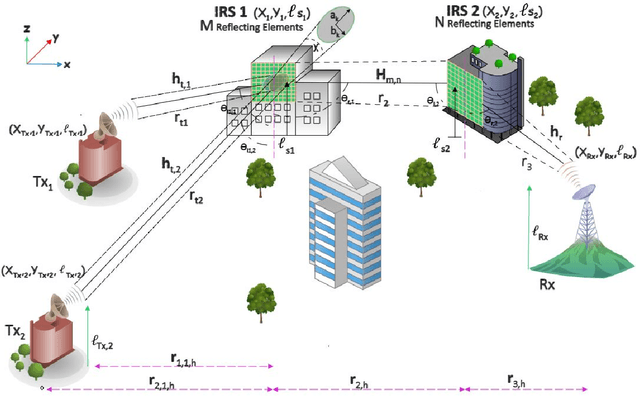
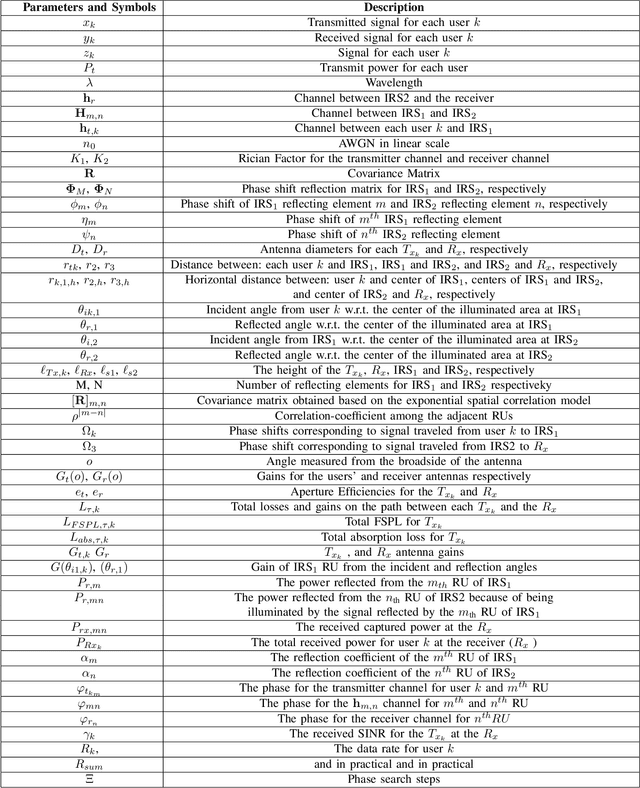
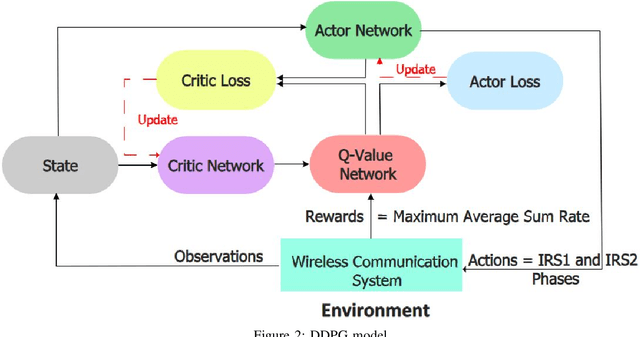
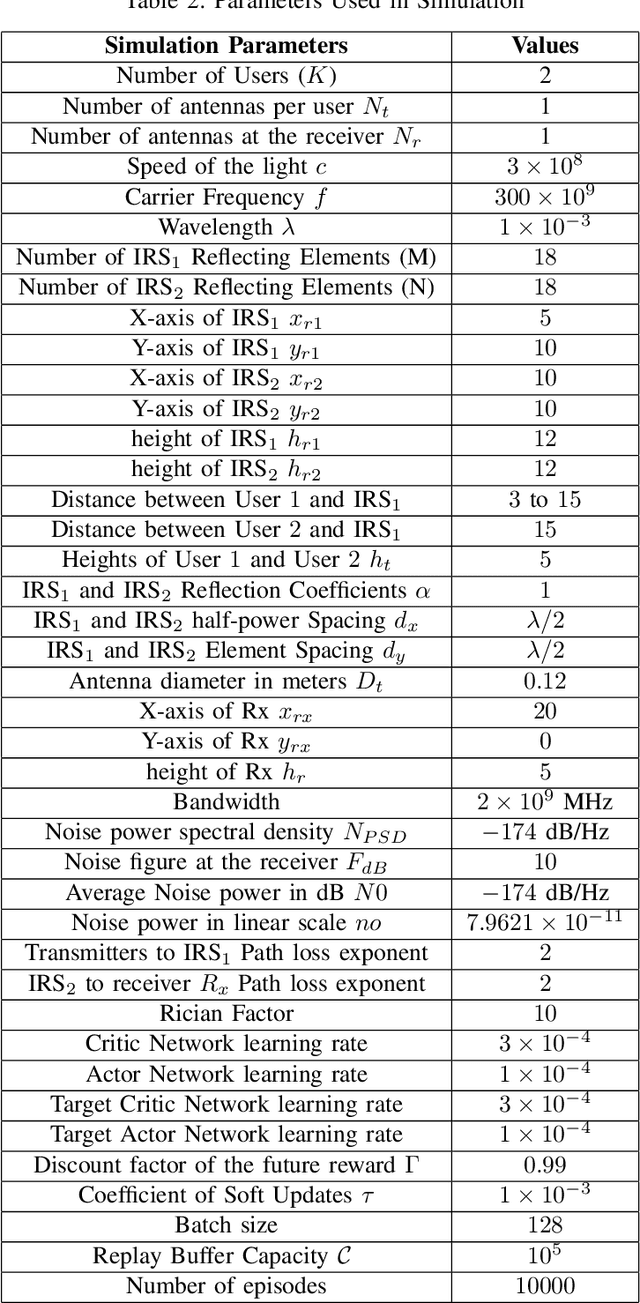
Abstract:We investigate THz communication uplink multiple access using cascaded intelligent reflecting surfaces (IRSs) assuming correlated channels. Two independent objectives to be achieved via adjusting the phases of the cascaded IRSs: 1) maximizing the received rate of a desired user under interference from the second user and 2) maximizing the sum rate of both users. The resulting optimization problems are non-convex. For the first objective, we devise a sub-optimal analytical solution by maximizing the received power of the desired user, however, this results in an over determined system. Approximate solutions using pseudo-inverse and block-based approaches are attempted. For the second objective, a loose upperbound is derived and an exhaustive search solution is utilized. We then use deep reinforcement learning (DRL) to solve both objectives. Results reveal the suitability of DRL for such complex configurations. For the first objective, the DRL-based solution is superior to the sub-optimal mathematical methods, while for the second objective, it produces sum rates almost close to the exhaustive search. Further, the results reveal that as the correlation-coefficient increases, the sum rate of DRL increases, since it benefits from the presence of correlation in the channel to improve statistical learning.
Design Challenges of Multi-UAV Systems in Cyber-Physical Applications: A Comprehensive Survey, and Future Directions
Oct 23, 2018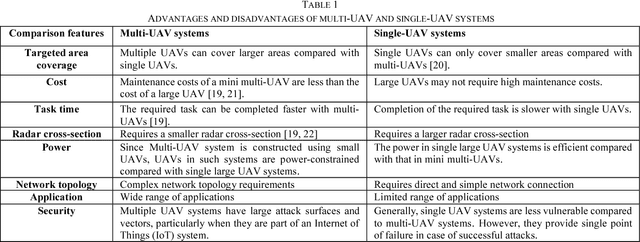

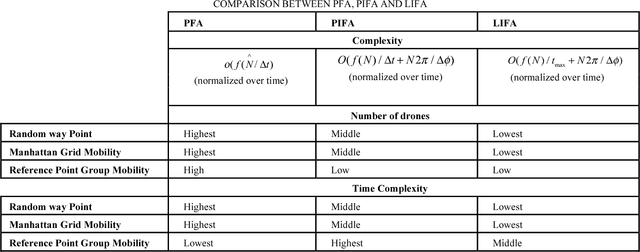
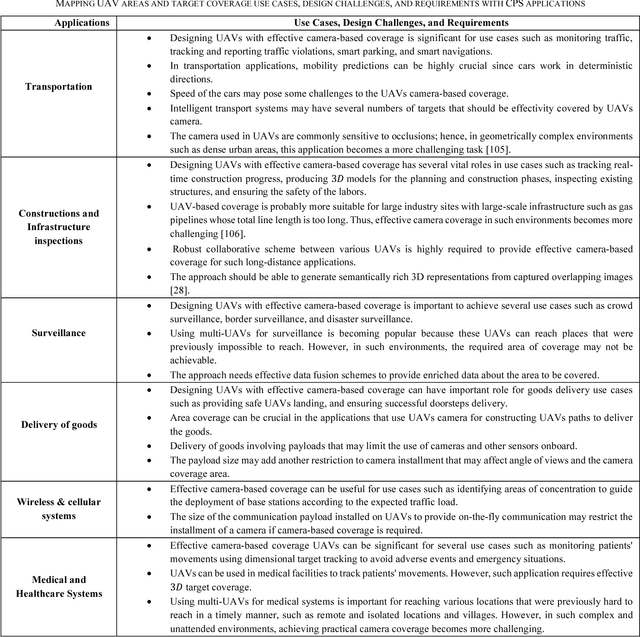
Abstract:Unmanned Aerial Vehicles (UAVs) have recently rapidly grown to facilitate a wide range of innovative applications that can fundamentally change the way cyber-physical systems (CPSs) are designed. CPSs are a modern generation of systems with synergic cooperation between computational and physical potentials that can interact with humans through several new mechanisms. The main advantages of using UAVs in CPS application is their exceptional features, including their mobility, dynamism, effortless deployment, adaptive altitude, agility, adjustability, and effective appraisal of real-world functions anytime and anywhere. Furthermore, from the technology perspective, UAVs are predicted to be a vital element of the development of advanced CPSs. Therefore, in this survey, we aim to pinpoint the most fundamental and important design challenges of multi-UAV systems for CPS applications. We highlight key and versatile aspects that span the coverage and tracking of targets and infrastructure objects, energy-efficient navigation, and image analysis using machine learning for fine-grained CPS applications. Key prototypes and testbeds are also investigated to show how these practical technologies can facilitate CPS applications. We present and propose state-of-the-art algorithms to address design challenges with both quantitative and qualitative methods and map these challenges with important CPS applications to draw insightful conclusions on the challenges of each application. Finally, we summarize potential new directions and ideas that could shape future research in these areas.
 Add to Chrome
Add to Chrome Add to Firefox
Add to Firefox Add to Edge
Add to Edge